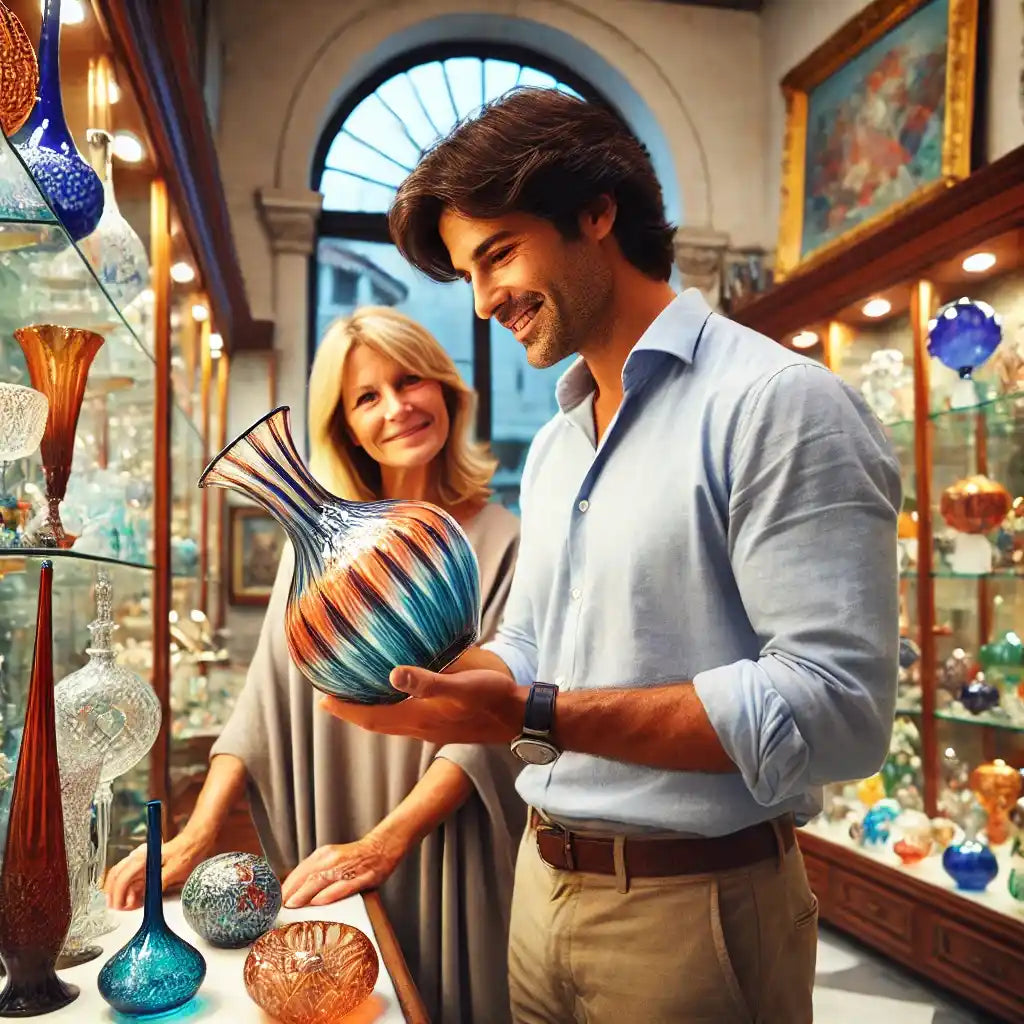Millefiori, also known as Murrine, is one of the artistic specialities of the Italian island of Murano, and in this post, we'll highlight a few examples of this intricate technique. This is among the most common hot glass techniques employed by Murano glassblowers.
After delving into the hidden depths of this masterwork, we've reached the conclusion that the brilliant colours and whimsical beauty of the flowers made using this technique make it impossible to ignore. Murano glass necklaces, earrings, paperweights, collectable figurines, centrepieces, and other artefacts are a testament to this immaculate artistry and can be found in museums worldwide.
Brief History Of Millefiori
This method, which originated during the 16th century on the Venetian island of Murano and is still utilised today, is a versatile approach to producing one-of-a-kind glass necklaces and jewellery designs inspired by wildlife, flowers, and other elements of nature. It's also great for making high-quality miniatures and artefacts to display.
In ancient Rome, skilled glassblowers produced colourful and ornate vases and other beautiful objects. A product of Renaissance Italy, millefiori (Italian for "thousand flowers") was created by Venetian glassmakers as an attempt to replicate the style of antique Roman glass. For Murano glassblowers, Millefiori serves as a benchmark for quality and as the beginning point for a wide variety of fascinating projects and creative endeavours.
Millefiori, also known as Murrine, is a centuries-old glassworking technique that involves fusing and sculpting a wide variety of miniature glass rods, bevels, as well as canes to create intricate patterns. The phrase "thousand blossoms" in Italian inspired the name. It was invented when Emperor Constantine banned the use of gold leaf in 313 A.D.; it allowed glassblowers to keep making lavish ornaments despite the ban.

Why Is It Popular?
During the 1st and 3rd century AD, Rome became a centre for the craft of glassmaking. Murano's glassmaking tradition is believed to have been brought to the island by Italian settlers around 1000 A.D. Glass mosaics, which had previously been employed primarily for religious purposes, were popular during this period. Then, methods like millefiori were created (thousand flowers).
The Romans used a method they dubbed "Opus Alexandrinum," which translates to "Egyptian craft," in which a rod of transparent coloured glass was dipped into a pot of hot glass to make the final product. At first, this method was recreated with a single rod, but later, multiple rods were fused and immersed in red glass, generating beads that allowed historians to deduce the original colours and designs used in ancient Roman jewellery.
Get The Finest Millefiori Products FromMuranoNet!
MuranoNet is one of the finest places to buy Murano Glass online. We are one of the go-to options for Murano Glass products, thanks to our wide range of goods. If you’re looking to buy a large glass vase with a wide mouth or a Venetian glass chandelier online, MuranoNet is your best bet. Get in touch with us today to learn more about our products.




1 comentario
Ingrid Gold
Ours is a resale store and any Murano item is very desirable. I am trying to determine resale price suggestion for fish paperweight millefleurs
Dejar un comentario
Todos los comentarios se revisan antes de su publicación.
Este sitio está protegido por hCaptcha y se aplican la Política de privacidad de hCaptcha y los Términos del servicio.